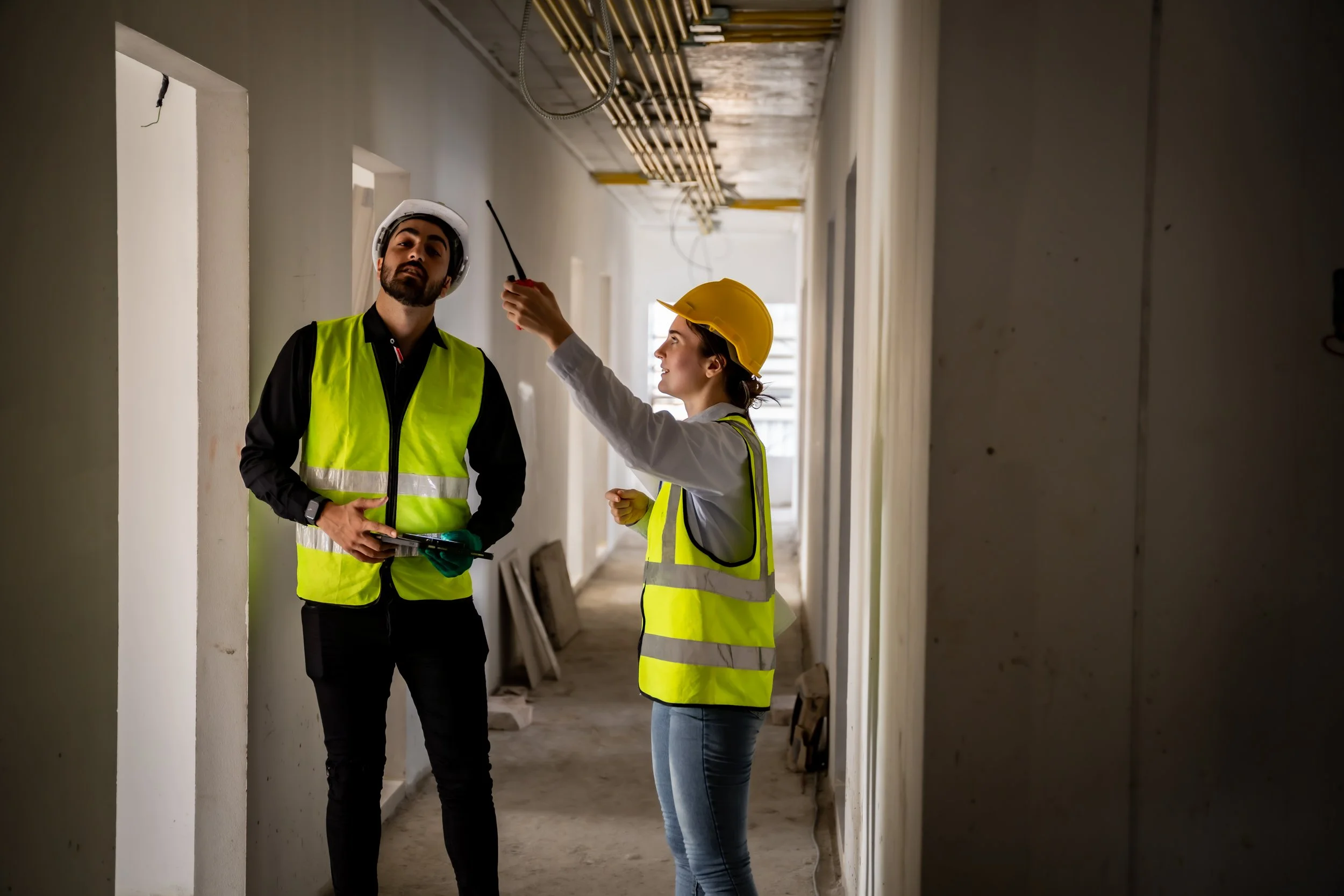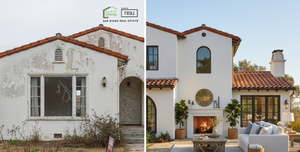Do I Need Earthquake or Wildfire Insurance When Buying in Coastal San Diego?
Buying a home in coastal San Diego can be both exhilarating and daunting, especially when considering the unique natural challenges that come with living in this beautiful area. Earthquakes and wildfires are two natural occurrences that potential homeowners often worry about. But do you need earthquake or wildfire insurance when buying property here?
TLDR Summary
Earthquake insurance isn't mandatory but recommended.
San Diego wildfires are rare on the coast but consider insurance depending on neighborhood.
One client's personal experience highlighted the peace of mind insurance can provide.
Coastal San Diego's market shows moderate risk, but insurance options vary.
Consult with the best San Diego realtor to navigate insurance decisions.
What Are the Risks of Earthquakes and Wildfires in Coastal San Diego?
San Diego is renowned for its stunning coastline, mild climate, and vibrant lifestyle. But living in such a paradise doesn't come without its risks. Earthquakes are an inherent part of California life due to seismic activity along the Pacific plate boundary. Although the threat level is moderate in comparison to other parts of California, it's a situation that shouldn't be entirely dismissed.
On the other hand, wildfires are more prevalent inland due to arid conditions but can still impact areas close to the coast, especially during dry, windy periods. Coastal neighborhoods like La Jolla, Pacific Beach, and Del Mar might see less risk compared to inland areas such as Poway and Escondido, but the possibility remains. For instance, data from 2025 indicates that fire incidents in coastal San Diego were relatively low, with less than 5% of wildfires impacting these areas.
Earthquake Scenarios
In one notable instance, an earthquake in the San Diego region in 2019, while modest, reminded homeowners of the latent risks lurking beneath the earth's surface. This prompted one of my clients to reconsider their insurance options in La Jolla, where even moderate tremors could potentially cause significant structural damage.
ThE Fire Reality
Wildfire risk is intrinsically linked to wind patterns and land management practices. While coastal weather helps stave off conditions ripe for wildfires, the infamous Santa Ana winds sometimes bring fires unexpectedly close. This risk makes specific parts of San Diego, even along the coast, more appealing for those opting for additional wildfire coverage.
How Do Earthquake and Wildfire Insurances Work?
Understanding the specifics of each insurance type helps in making an informed decision. Here's a breakdown:
Earthquake Insurance
Earthquake insurance is a separate policy from standard homeowner's insurance. This insurance typically covers structural damage, personal property, and additional living expenses if your home becomes uninhabitable after an earthquake.
Pros of Earthquake Insurance:
Peace of Mind: Assurance if "the big one" occurs.
Asset Protection: Saves costs on potentially extensive structural repairs.
Cons of Earthquake Insurance:
High Deductibles: Often ranging between 10-15%.
Limitations: Exclusions on certain types of damages, like land or vehicle damage.
Wildfire Insurance
Wildfire insurance is often part of homeowners' insurance packages in areas at risk. This covers most fire-related damages.
Pros of Wildfire Insurance:
Comprehensive Coverage: Generally includes the home itself and all its contents.
Evacuation Costs: Often covers temporary relocation expenses if evacuation is required.
Cons of Wildfire Insurance:
Policy Varies: Coverage often depends heavily on the provider and specific policy terms.
Which Inspections Should I Consider?
Before committing to insurance, it’s critical to conduct comprehensive inspections tailored to your risk profile and the property’s location in San Diego.
Home Seismic Assessment
This inspection evaluates your property's vulnerability o earthquake damage and often includes recommendations for preventative measures. In one of my recent transactions for a coastal property in Del Mar, a seismic inspection revealed the need for foundational retrofitting—a small upfront cost compared to potential post-quake repairs.
Fire Risk Assessment
Inspectors identify potential fire hazards within and around the property. For example, properties near Torrey Pines require an assessment of nearby vegetation and compliance with local fire mitigation guidelines.
Soil Stability Inspection
San Diego’s hilly coastal areas are prone to landslides post-earthquake. A soil inspection can help determine the stability of a property’s foundation, particularly in neighborhoods like Point Loma and Encinitas.
What Are the Insurance Costs and Timelines?
The costs of insurance vary based on the specific risks associated with your property. Below is a general guideline based on recent data:
The process generally takes 1 to 3 weeks to finalize, depending on insurer responsiveness and the completion of necessary inspections.
What Happens If Inspections Are Skipped?
Skipping vital inspections can lead to unexpected financial burdens and safety risks:
Undetected Risks: Leads to unforeseen repair costs or complete structural failure in the event of natural disasters.
Increased Insurance Costs: Without inspections, you may face higher premiums due to the unknown risk factors.
In a recent situation, a client purchasing in Pacific Beach opted not to conduct a seismic inspection and later faced unexpected retrofitting costs following regional policy updates.
How Can Specific San Diego Neighborhoods Influence Your Decision?
La Jolla
Known for rocky shores and seaside cliffs, La Jolla is a sought-after area with moderate earthquake risk. Earthquake insurance here can be a prudent choice if you're putting a lot into your dream sea-view home.
Carlsbad
Moderate fire risk exists in western Carlsbad. Ensuring your property has fire mitigation features can be more cost-effective than supplemental insurance in this area.
Downtown San Diego
Here, the focus is often more on high-rise buildings. Earthquake insurance can be vital, given the potential for structural damage in a more densely built environment.
Residential Realities
In places like Encinitas and Cardiff-by-the-Sea, the mix of terrain and open space influences the insurance decision—often leading to a combination of both earthquake and wildfire insurances for full peace of mind.
Ultimately, the decision to obtain earthquake or wildfire insurance in Coastal San Diego is highly personal and often linked to peace of mind rather than just financial protection. Each neighborhood offers unique challenges and attractions, and a well-rounded approach can keep your investment secure.
FAQs
Does homeowner's insurance cover earthquakes in San Diego?
No, typical homeowner's insurance does not cover earthquake damage. It's often necessary to purchase separate earthquake insurance to protect against these specific events.
Is wildfire coverage included in standard homeowner’s policies in San Diego?
Generally, yes, wildfire coverage is often included, but it's crucial to verify this with your insurance provider and understand the specific terms.
Are coastal homes more expensive to insure against earthquakes?
Coastal home insurance rates can vary depending more on construction type and property value rather than just location. A thorough risk assessment helps set realistic costs.
Can I get insurance if I don’t perform any inspections?
Yes, but it may be costly. Inspections help insurers assess risk better and often lead to more accurate premium quotes.
What steps can I take to reduce wildfire risk besides insurance?
Implement defensible space protocols by clearing dry vegetation, install ember-resistant vents, and consult local fire department resources for property-specific advice.
For tailored advice, consultations, and neighborhood insights, you need an experienced guide to navigate San Diego's dynamic real estate market. I’m Scott Cheng, your best San Diego realtor. Call or text me at (858) 405-0002 or emailscott@scottchengteam.com to find your perfect home and the protection it deserves.










